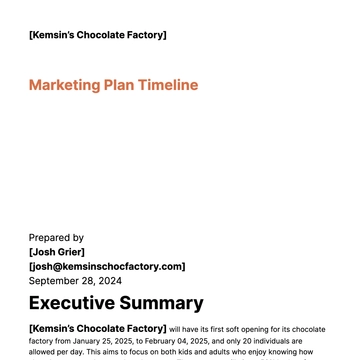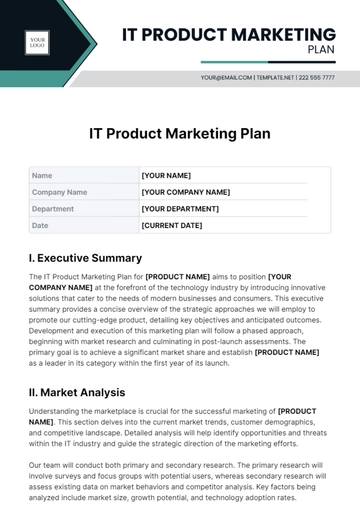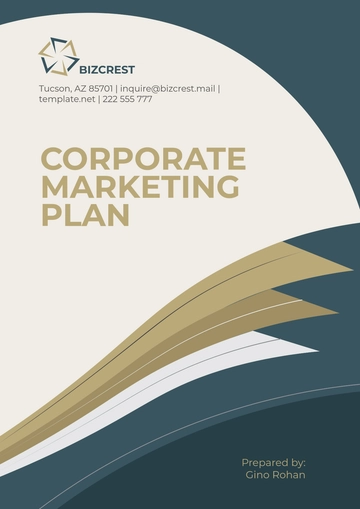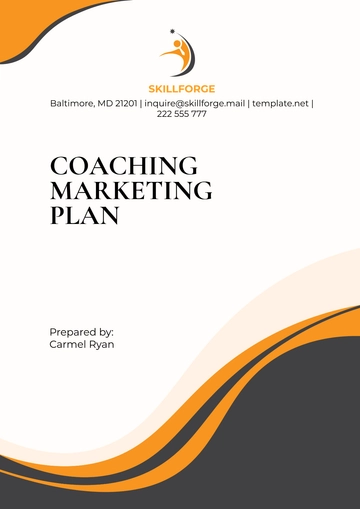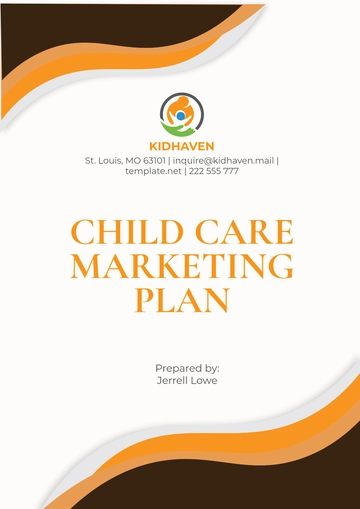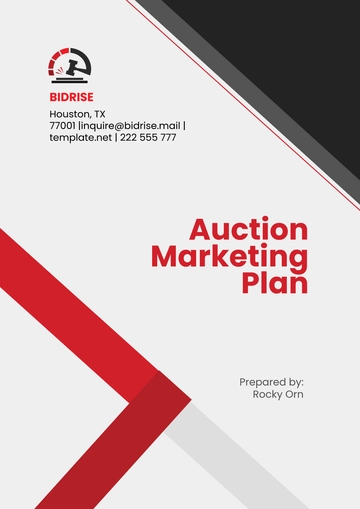Free Yearly Marketing Plan

I. Executive Summary
[YOUR COMPANY NAME]'s yearly marketing plan outlines strategic objectives and goals aimed at driving growth and enhancing brand visibility. By focusing on innovative product offerings, targeted marketing campaigns, and strategic partnerships, we aim to capture new market opportunities and strengthen our position in the industry. With a dedicated budget and comprehensive implementation plan, we are poised to achieve our marketing objectives and deliver impactful results throughout the year.
II. Situation Analysis
A. Market Analysis
Aspect | Findings/Analysis |
|---|---|
Market Trends |
|
Opportunities |
|
Threats |
|
B. SWOT Analysis
Aspect | Analysis |
|---|---|
Strengths | Strong brand reputation, innovative product range |
Weaknesses | Limited presence in online channels, reliance on traditional marketing methods |
Opportunities | Growing trend towards sustainable products, untapped markets in emerging economies |
Threats | Aggressive competition in the market, changing regulatory environment |
C. Competitive Analysis
Competitor | Strengths | Weaknesses |
|---|---|---|
Competitor A | Wide product range | Limited digital presence |
Competitor B | Strong brand loyalty | High product pricing |
Competitor C | Innovative marketing campaigns | Limited distribution channels |
III. Vision, Mission, and Goals
A. Vision Statement
To become the leading provider of sustainable and innovative products that enhance the lives of our customers and contribute to a better world.
B. Mission Statement
Our mission is to create high-quality products that inspire and delight our customers while minimizing our environmental impact through sustainable practices.
C. Marketing Goals
Increase market share by 15% through the launch of new product lines and expansion into new markets.
Enhance brand visibility and awareness by 20% through targeted marketing campaigns.
Improve customer engagement and loyalty by implementing a comprehensive customer retention program.
IV. Target Audience
Primary Audience: Environmentally conscious consumers aged 25-45, with a higher disposable income, who value sustainability and seek high-quality products.
Secondary Audience: Millennials and Gen Z, interested in trendy and eco-friendly products, often influenced by social media and digital marketing.
V. Marketing Strategies
A. Product Strategy
Introduce a new line of sustainable products made from recycled materials.
Enhance existing products with eco-friendly packaging and materials.
B. Pricing Strategy
Offer competitive pricing to attract price-sensitive consumers.
Implement a premium pricing strategy for exclusive and innovative products.
C. Distribution Strategy
Expand online presence through partnerships with e-commerce platforms.
Increase retail presence in environmentally conscious stores and boutiques.
D. Promotion Strategy
Launch a multimedia advertising campaign highlighting the sustainability and quality of our products.
Collaborate with influencers and eco-conscious celebrities to promote our brand.
VI. Marketing Budget
Category | Budget Allocation (%) | Amount ($) |
|---|---|---|
Advertising | 30% | $300,000 |
Digital Marketing | 25% | $250,000 |
Events | 10% | $100,000 |
PR | 15% | $150,000 |
Other | 20% | $200,000 |
Total | 100% | $1,000,000 |
VII. Implementation Plan
A. Timeline
Q1: Launch new product line
Q2: Expand online presence
Q3: Implement customer retention program
Q4: Review and adjust strategies based on performance
B. Responsibilities
Marketing Director: Overall strategy and budget management
Product Manager: New product development and launch
Digital Marketing Manager: Online presence and campaigns
PR Manager: Public relations and media partnerships
C. Monitoring and Evaluation
Monthly performance reviews based on KPIs
Quarterly strategy review meetings
Annual comprehensive review and planning for the next year
VIII. Marketing Tactics
Digital Marketing: SEO, SEM, social media campaigns, influencer partnerships
Traditional Marketing: Print ads, radio spots, TV commercials
Events and Sponsorships: Eco-friendly events, sponsorships of environmental causes
IX. Measurement and Analytics
Track website traffic, conversion rates, and engagement metrics.
Monitor social media metrics, including reach, engagement, and follower growth.
Analyze sales data to measure the impact of marketing efforts on revenue.
X. Conclusion
In conclusion, this yearly marketing plan aims to position [YOUR COMPANY NAME] as a leader in sustainability while achieving our marketing objectives and goals. By focusing on innovation, customer engagement, and environmental responsibility, we are confident in our ability to succeed in the market and make a positive impact on the world.
- 100% Customizable, free editor
- Access 1 Million+ Templates, photo’s & graphics
- Download or share as a template
- Click and replace photos, graphics, text, backgrounds
- Resize, crop, AI write & more
- Access advanced editor
Stay ahead of the competition with Template.net's Yearly Marketing Plan Template. This editable template, accessible in our AI Editor Tool, allows you to map out your marketing activities for the entire year. Customizable to reflect your brand's vision, this template enables you to implement strategic marketing initiatives effectively. Download today!

